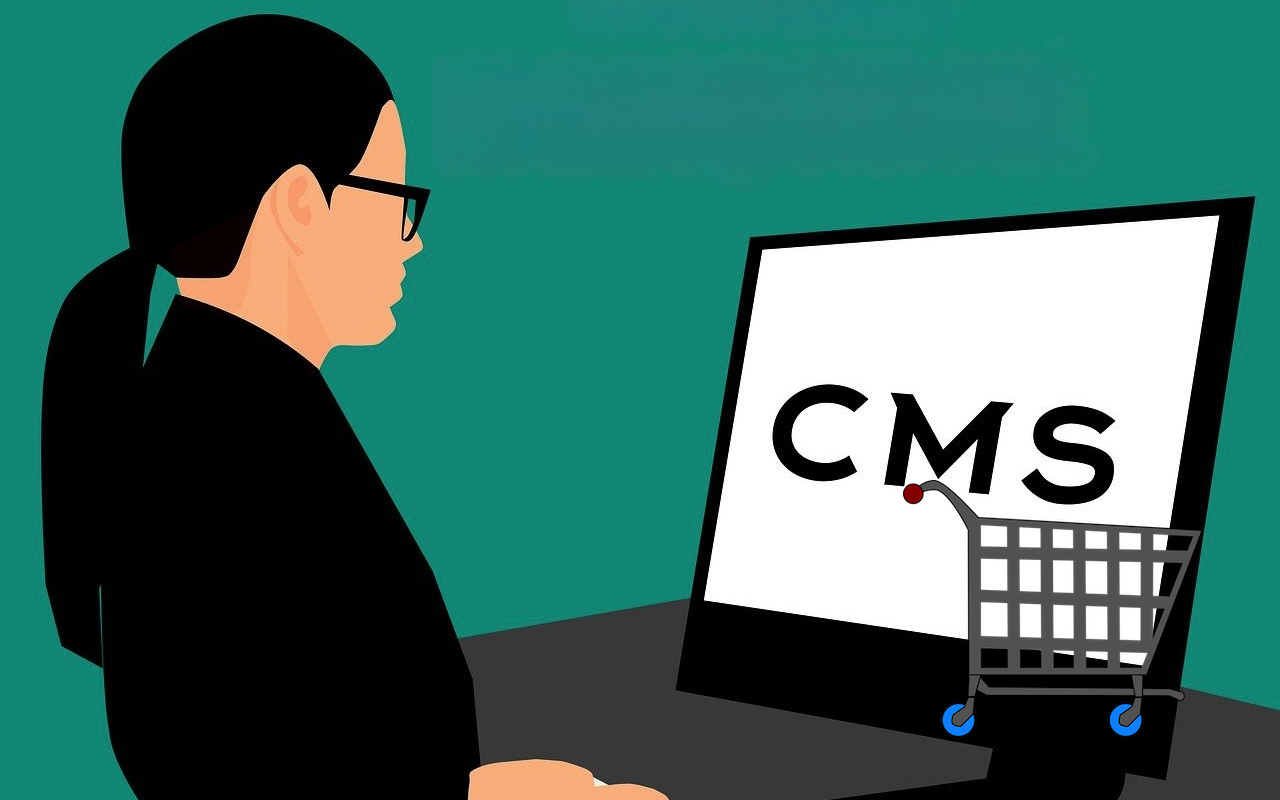
Selling online shouldn’t feel like fighting your own website. But for many e-commerce businesses, updating content, launching a new promo page, or supporting multiple channels feels slow and frustrating. Most of the time, it’s because the content is stuck inside your store platform, with little flexibility. A headless CMS breaks that limitation.
By separating your content from your storefront, your team gets more freedom, speed, and control, without needing to rebuild your entire site. In this article, we’ll walk through five of the best headless CMS platforms made for eCommerce businesses that want to grow faster, sell smarter, and move quicker.
TL;DR - Side-by-Side Comparison of Top Headless CMS Solutions
Top 5 Headless CMS Platforms for eCommerce
1. Hygraph – Best for Complex Catalogs and Composable Commerce
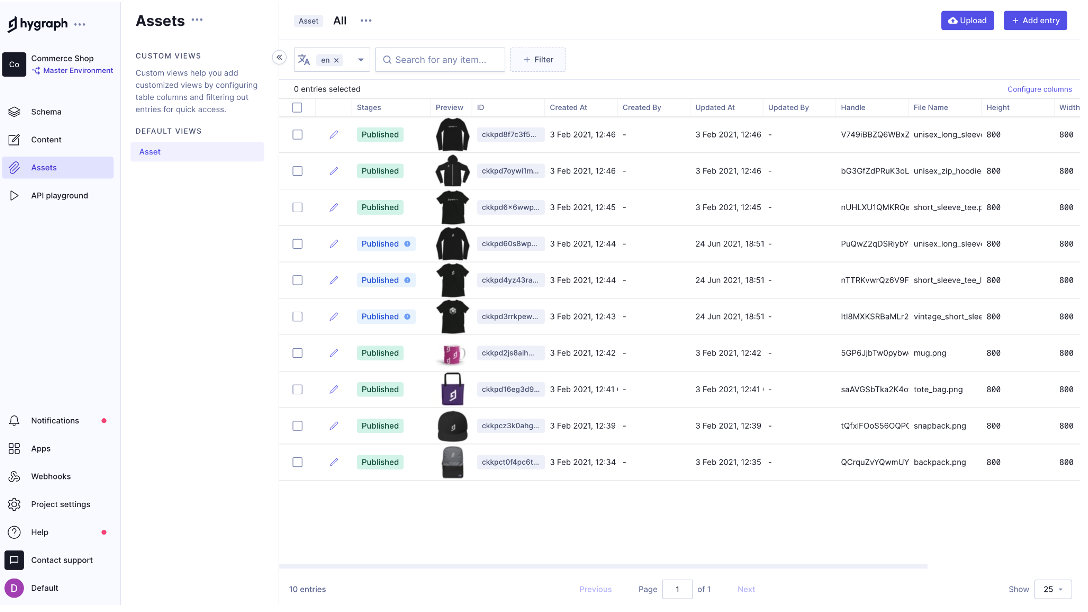
Hygraph is a headless CMS built for performance, flexibility, and deep product data needs. It’s fully GraphQL-native and designed to work seamlessly with modern, composable eCommerce architectures. If your store has a large, complex product catalog, works with a PIM, or needs content to be tightly integrated with product data, Hygraph is an excellent fit.
Why It’s Great for eCommerce
- Perfect for structured product content: Hygraph makes it easy to manage rich product pages with technical specs, bundles, custom metadata, and more – all tied together cleanly in the CMS.
- GraphQL-native APIs: Ideal for teams using modern frontend frameworks like Next.js or Remix. You get fast, precise queries that reduce loading times and improve performance.
- Integrates with your stack: Works smoothly with platforms like Shopify, commercetools, and any custom APIs.
- Great for composable commerce: Easily connect content, products, PIM, reviews, localization tools, and more into one flexible system.
What to Keep in Mind
Hygraph is powerful, but not as marketer-friendly out of the box as some other CMS options. Its pricing is aimed at serious growth brands and may be overkill for small stores.
Best For:
- Stores with detailed, structured product catalogs
- Brands using PIMs or building composable commerce stacks
- Developer-led teams focused on performance and flexibility
2. Contentful – Best for Scalable, Global eCommerce Brands
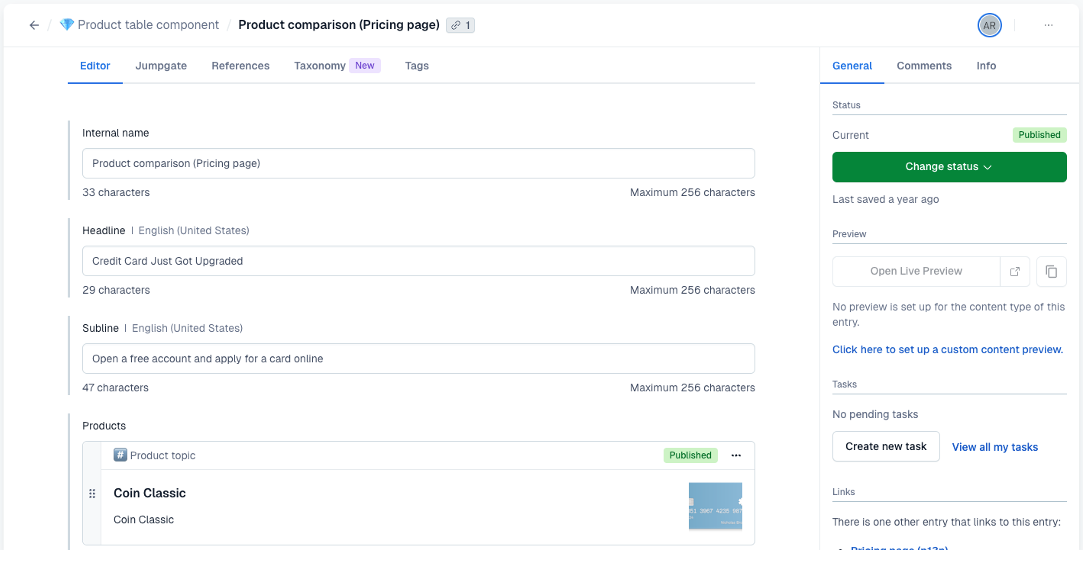
Contentful is one of the most popular headless CMS platforms used by large eCommerce companies, and for good reason. It gives your team full control over how content is created, structured, and delivered across every storefront, market, or device. It’s built to scale, making it a top choice for brands with large product catalogs, international stores, or high content demands.
Why It’s Great for eCommerce
- Works with any store backend: Whether you’re using Shopify, BigCommerce, commercetools, or a custom setup, Contentful delivers content through APIs that plug right into your stack.
- Flexible content models: Build rich product pages, promo banners, landing pages, lookbooks (anything your marketing team needs) without relying on devs every time.
- Built-in localization: Manage multiple languages and regions from one place – great for international brands.
- Content scheduling & versioning: Plan product launches or seasonal campaigns ahead of time, and roll back changes if needed.
What to Keep in Mind
It’s a powerful platform, but pricing can climb quickly, especially as your team and content grow. Some setup and content modeling experience is helpful to get the most out of it.
Best For:
- Mid-size to enterprise brands
- Stores with international or multi-brand setups
- Teams that need powerful localization, workflow, and structure
3. Strapi – Best for Developer-Led, Custom eCommerce Builds
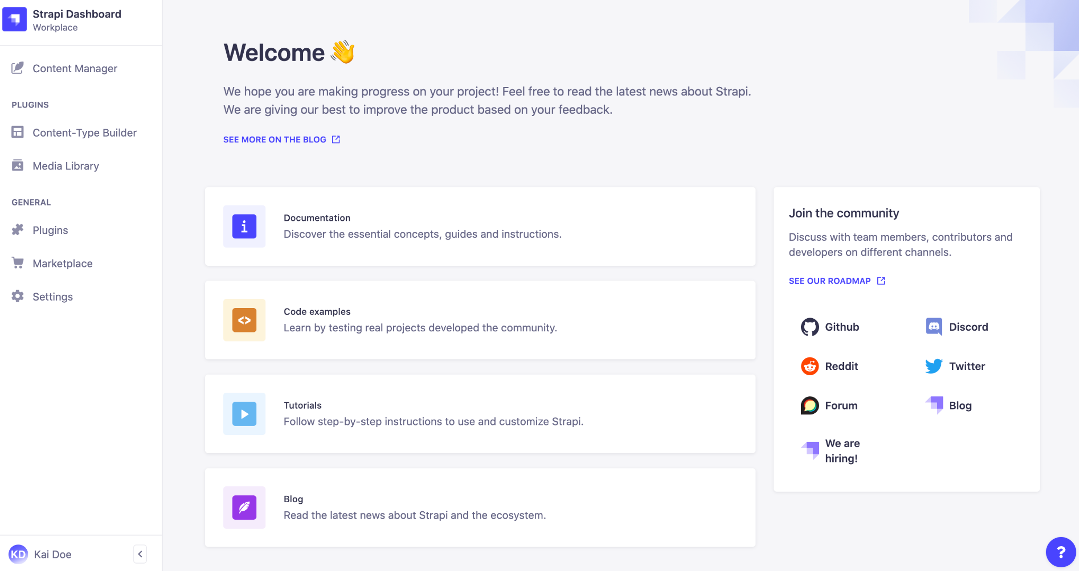
Strapi is an open-source headless CMS that gives developers full control over how content is created, managed, and delivered. It’s highly flexible and self-hosted (or optionally cloud-hosted), which makes it ideal for eCommerce teams building custom storefronts or fully tailored stacks. If you want to own your data, avoid vendor lock-in, and build exactly what you need, Strapi is a great starting point.
Why It’s Great for eCommerce
- Open-source and self-hosted: You’re in full control of your content, APIs, and data. Great for businesses with strict data or hosting requirements.
- Flexible content modeling: Easily define custom structures for products, categories, marketing pages, blogs, and more.
- REST & GraphQL APIs: Choose your preferred API style to integrate with any frontend or commerce backend like Medusa, Vendure, or custom platforms.
- Extendable with plugins: Add features like image optimization, SSO, or custom workflows as your store grows.
What to Keep in Mind
There’s no built-in visual editor, and setup requires technical knowledge, especially for custom logic or APIs. You’ll need to manage your own infrastructure unless you opt for their cloud offering.
Best For:
- Developer-first teams
- Custom eCommerce platforms (e.g. with Medusa, Vendure, or custom carts)
- Stores that want full control over architecture and data
4. Sanity – Best for Fast-Moving Content Teams and DTC Brands

Sanity is a flexible, real-time headless CMS designed for teams that move quickly. It gives marketers and content editors the tools to build and update eCommerce pages without waiting on developers, while still offering deep customization for tech teams. Its powerful content modeling and live preview features make it a favorite for direct-to-consumer (DTC) brands and campaign-heavy eCommerce stores.
Why It’s Great for eCommerce
- Real-time editing & collaboration: Multiple team members can work on product content, landing pages, and campaigns at the same time, without stepping on each other’s toes.
- Live product previews: Editors can see how changes will look before publishing, which is perfect for building high-converting PDPs and promo pages.
- Structured content = reusable content: Easily reuse product descriptions, features, or banners across multiple pages and campaigns.
- Shopify integration ready: Sanity offers direct plugins and guides to sync product data from Shopify for content-rich custom storefronts.
What to Keep in Mind
While flexible, Sanity requires developer setup for the front end and initial content model design. Instead of GraphQL, Sanity uses its own query language (GROQ), which may need some learning.
Best For:
- DTC brands and startups with lots of campaigns
- Content teams who want speed and flexibility
- Stores built with modern frontends like Next.js or Remix
5. Storyblok – Best for Visual Editing and Content-Heavy eCommerce
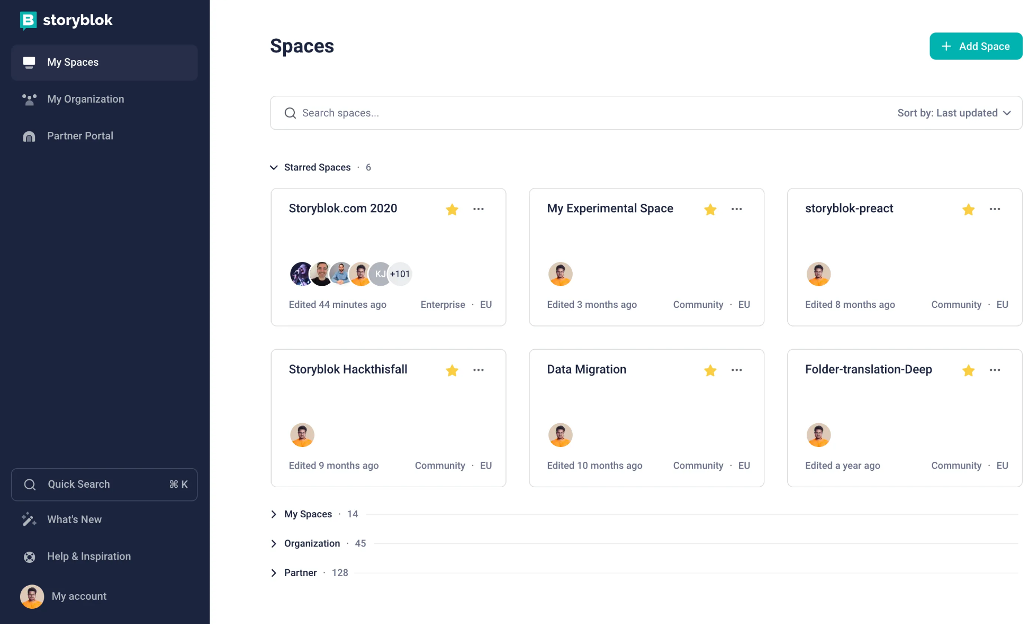
Storyblok combines the power of a headless CMS with a visual editing experience that non-technical users love. It’s built to help marketing and content teams create beautiful product pages, campaigns, and landing pages without touching code. For eCommerce stores that need to move fast, run frequent promotions, or manage content-heavy catalogs, Storyblok makes publishing easy and efficient.
Why It’s Great for eCommerce
- Visual editor with live preview: Drag-and-drop components and edit content directly on the page (great for marketers, merchandisers, and designers).
- Reusable content blocks: Build flexible page sections (like hero banners, product grids, or reviews) once and reuse them across the site.
- Integrates with Shopify, BigCommerce, and others: Supports composable commerce setups with any major frontend or backend.
- Localization and multi-site support: Run multiple languages or regional sites from one CMS instance.
What to Keep in Mind
Storyblok encourages a specific way of building sites, which might limit flexibility for complex or deeply custom builds. Developers need to define content blocks and logic before marketers can use the visual tools effectively.
Best For:
- Teams that want easy, visual content management
- Stores running frequent marketing campaigns
- Brands that need fast updates without developer delays
3 Extra Headless CMS Options (Bonus)
While the top 5 platforms are ideal for most eCommerce needs, there are a few other headless CMS options worth considering, especially if your business has specific goals or constraints.
- Kontent.ai – Best for Enterprise Content Governance: A MACH-certified CMS built for large teams, Kontent.ai offers strong content governance, workflows, and localization support. Ideal for enterprise eCommerce brands needing strict content approval processes and global consistency.
- Contentstack – Best for Workflow Automation: Used by major retailers, Contentstack combines headless flexibility with enterprise-grade features like role-based permissions, workflows, and versioning. It’s particularly good for large teams with complex content operations.
- DatoCMS – Best for Startups and Small Teams: A simpler, developer-friendly CMS that still offers strong GraphQL support and media management. DatoCMS is great for smaller eCommerce businesses that want headless flexibility without the overhead of enterprise platforms.
Use Case Mapping: Who Should Use What?
The right headless CMS choice depends on your store’s structure, team setup, and growth goals. Here’s a quick breakdown to help you match your needs with the best fit:
| Use Case | Recommended CMS | Why |
|---|---|---|
| Composable commerce with complex product data | Hygraph | GraphQL-native CMS built to connect product, PIM, and content layers. |
| Large global store with multiple languages | Contentful | Enterprise-ready with strong localization and structured content models. |
| Custom-built eCommerce with full dev control | Strapi | Open-source, flexible, and great for integrating with any custom stack. |
| Fast-moving brand with frequent campaigns | Sanity | Real-time editing, reusable content, and strong collaboration tools. |
| Marketing-led team needing visual control | Storyblok | Drag-and-drop visual editor with live previews for easy page building. |
| Enterprise team needing approval workflows | Kontent.ai / Contentstack | Designed for large teams managing content at scale with governance. |
| Lean startup or small team | DatoCMS | Lightweight, easy to use, and budget-friendly for growing brands. |
How to Integrate Headless CMS with Commerce Engines
A headless CMS doesn’t replace your eCommerce platform. It works alongside it. The CMS handles your content, while your commerce engine manages things like products, pricing, inventory, and checkout. The key to making this setup work is seamless integration between the two.
How They Work Together
- Commerce Engine → Manages your backend (products, orders, cart, payments).
- Headless CMS → Powers the content around it (product stories, landing pages, blogs, campaign banners, etc.).
- Frontend → Pulls data from both systems via APIs to create fast, dynamic shopping experiences.
Key Integration Tips
- Use a modern frontend: Frameworks like Next.js, Nuxt, or Remix are great for pulling content and product data into one seamless experience.
- Plan content modeling early: Structure your CMS around how your store actually sells: collections, bundles, campaigns, etc.
- Sync product data if needed: Some CMSs (like Sanity or Storyblok) offer direct plugins to sync product info from Shopify or other platforms.
- Keep the checkout in the commerce platform: Let the CMS handle content, but leave secure functions like checkout, payments, and order tracking to your eCommerce engine.
Because a headless CMS delivers content via API, you can reuse the same content across:
- Websites
- Mobile apps
- Emails
- In-store displays
- Marketplaces like Amazon or Instagram Shops
This means less duplicated work, faster updates, and a more consistent brand experience.
Conclusion
The right headless CMS platform can empower your e-commerce business to move faster, tell better product stories, launch campaigns on time, and scale across regions and channels without being held back by rigid systems.
Whether you're a global brand managing complex catalogs (like with Hygraph or Contentful), a developer-led startup building a custom stack (Strapi), or a fast-moving DTC team needing real-time control (Sanity or Storyblok), there’s a headless CMS out there built for your exact needs.
As eCommerce continues to change, flexibility, speed, and content freedom will only become more important. A headless CMS helps you get there, without sacrificing performance or creativity.
Featured Image by Freepik.


Comments (0)
No comment